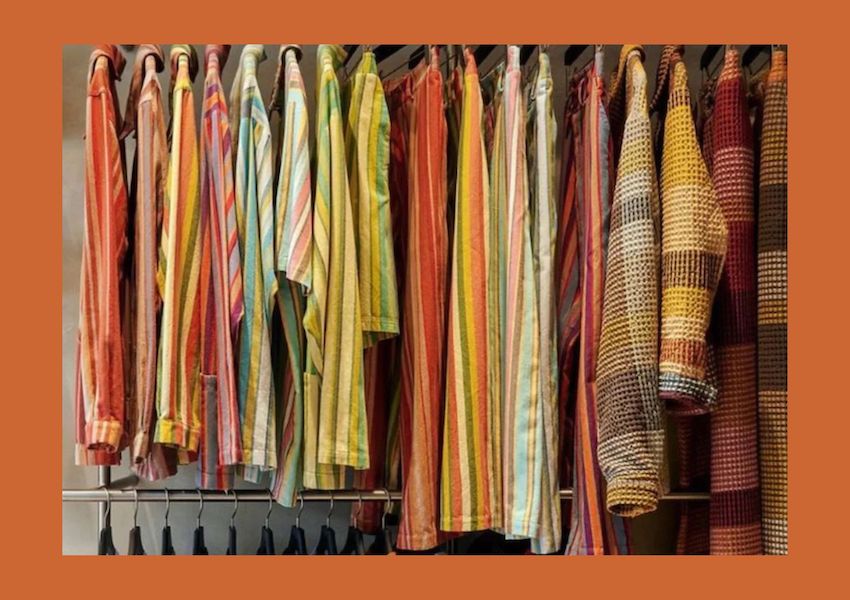The Expert Guide: 7 Tips on Mastering Product Development

As the former senior product development lead for American designer brand Alexander Wang, where she worked for seven years, Nicola Ferraro knows a thing or two about all the steps that are necessary for an item to be ready for production. She has also held production development roles at Derek Lam and Theory while her background is in merchandising and product development from the Fashion Institute of Technology.
In simple terms, product development is taking a design from a concept to an inception, using quality materials at a low cost to your target margin and business objectives. Taking designs from images or ideas and bringing them to life. For the most part, involves communicating daily with a factory or production team, working on a strategy, meeting deadlines and staying within budget.
Ferraro recently took part in The Folklore’s inaugural Speaker Series, a monthly webinar that empowers our community of brands with expert advice, knowledge and industry insight to grow and succeed in every aspect of their business. From marketing and customer service to logistics and supply chains, the monthly sessions will be led by an experienced professional as an opportunity for brands to learn, ask questions and engage with our community.
Below, we share seven of Nicola Ferraro’s key factors of product development that very brand should incorporate into their business operations.
Create a merch plan
This lays out the strategy for the season based on historical data. Future sales are usually based on past sales data so use your knowledge of the current season to plan for the next. Try to not overspend your budget and stick to your plan such as how many units to produce or factory capacity. Keep weekly track of your merchandise to know when to add or reduce production. Overdevelopment shouldn’t be more than 25%. Don’t overspend so that you eat into next season’s budget.
Sourcing
This is the process of gathering materials for your products from local or international markets. Ideally, you want to over-source so that you can weed out unwanted suppliers and to have backups to protect against disappointments, cancellations, supply issues, or to get the best price. It’s wise to use different factories and multiple sources as a contingency for unforeseen circumstances. You can also do what is known as counter-sourcing – such as alternative suppliers for textiles, finishes, manufacturing factories in case factors such as high costs (inflation) and other inconveniences – as a strategy for lowering costs or when outside factors change your circumstances.
Costing and margin:
Your margin is the difference between the cost of making a product and the profit you would like to make on it, which determines your retail price. You should mark out your material and make costs (FOB) and sourcing based on these numbers. Margins are based on company goals and you should aim to make more than 50%; 65-75% is regarded as a healthy margin. The FOB (free on board) cost is how much it takes to create your products (such as factory, manufacturing, transport and distribution, etc), while the landed cost is the expenses related to shipping the finished product either to a buyer, retailer or customer.
Timing vs Quality
Timing is everything. Ferraro emphasizes the importance of adhering to a seasonal calendar or timeline. Not sticking to your calendar may affect your product quality. Make sure all your partners also have your timeline so they can plan accordingly and deliver on time and eliminate last-minute changes and timing issues. It could take up to four weeks to create a sample so give yourself and your partners enough time to plan and create. Delays at the start cause delays at the end so stay on top of all moving parts.
Integrity
Though maintaining the integrity of designs can be difficult due to cost, it’s important to always maintain the design in the fit of a garment. Keep it as close as possible to the original idea or materials and not cut too many corners in order maintain the company aesthetic.
Product knowledge
It’s important to understand the materials and make of products not only for yourself but to be able to educate others. Knowing these product details can help with production issues of all sorts such as defective products and care instructions as well as product descriptions for retailers. You can hold training sessions or create presentations for your sales teams so they can successfully market your products with all the right knowledge.
Liaison and communication
You have to know how departments communicate with each other in order to ensure that things will works smoothly. As a middleman between all your design and production teams, you have to be a master of communication to meet deadlines, answer important questions and avoid delays or errors during the manufacturing. Stay in constant communication with your atelier, sewers, cutters and pattern makers to get up-to-date information that production needs, as well as communicate design concepts and vision to the manufacturers. Have a direct but warm approach and make sure you are nice to everyone as you’ll come across people over and over in the industry.
